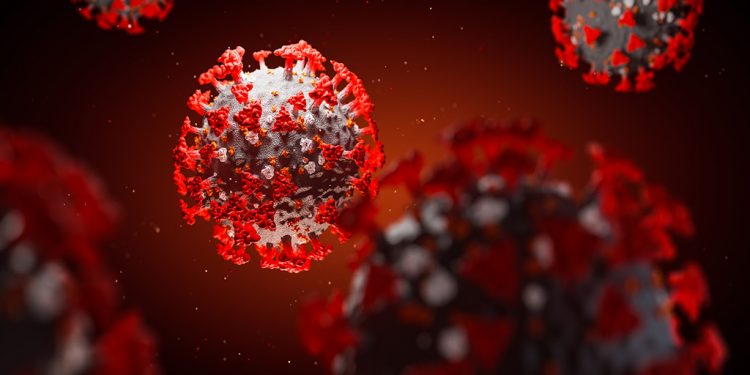Washington: High humidity can extend the airborne lifetime of medium-sized virus-laden droplets by as much as 23 times, according to a study which suggests that maintaining physical distancing would significantly remediate the spread of COVID-19.
The novel coronavirus that causes COVID-19 is thought to spread through natural respiratory activities, such as breathing, talking and coughing, but little is known about how the virus is transported through the air, the researchers said.
The study, published in the journal Physics of Fluids, analysed how airflow and fluid flow affect exhaled droplets that can contain the virus.
The model developed by researchers at the University of Missouri in the US includes a more accurate description of air turbulence that affects an exhaled droplet’s trajectory.
“If the virus load associated with the droplets is proportional to the volume, almost 70 per cent of the virus would be deposited on the ground during a cough,” said study author Binbin Wang.
“Maintaining physical distancing would significantly remediate the spread of this disease through reducing deposition of droplets onto people and through reducing the probability of inhalation of aerosols near the infectious source,” said Wang.
Droplets exhaled in normal human breath come in a range of sizes, from about one-tenth of a micron to 1,000 microns, according to the researchers.
For comparison, a human hair has a diameter of about 70 microns, while a typical coronavirus particle is less than one-tenth of a micron, they said.
The team noted that the most common exhaled droplets are about 50 to 100 microns in diameter.
The droplets exhaled by an infectious individual contain virus particles as well as other substances, such as water, lipids, proteins and salt, the researchers said.
Their study considered not just transport of droplets through the air but also their interaction with the surrounding environment, particularly through evaporation.
The researchers used an improved description of air turbulence to account for natural fluctuations in air currents around the ejected droplet.
They were able to compare their results to other modelling studies and to experimental data on particles similar in size to exhaled droplets.
The model showed good agreement with data for corn pollen, which has a diameter of 87 microns, approximately the same size as most of the exhaled droplets.
The researchers found that humidity affects the fate of exhaled droplets, since dry air can accelerate natural evaporation.
In air with 100 per cent relative humidity, the simulations show larger droplets that are 100 microns in diameter fall to the ground approximately six feet from the source of exhalation, they said.
Smaller droplets of 50 microns in diameter can travel further, as much as five meters, or about 16 feet, in very humid air, according to the researchers, adding that less humid air can slow the spread.
At a relative humidity of 50 per cent, none of the 50-micron droplets travelled beyond 3.5 meters, they said.
PTI






































